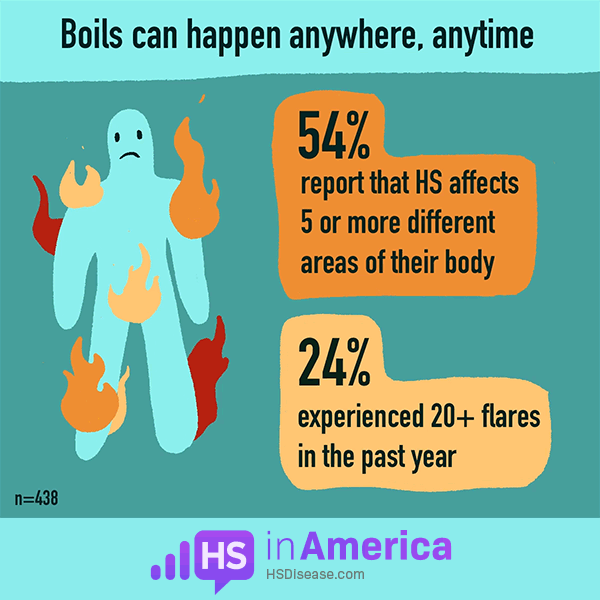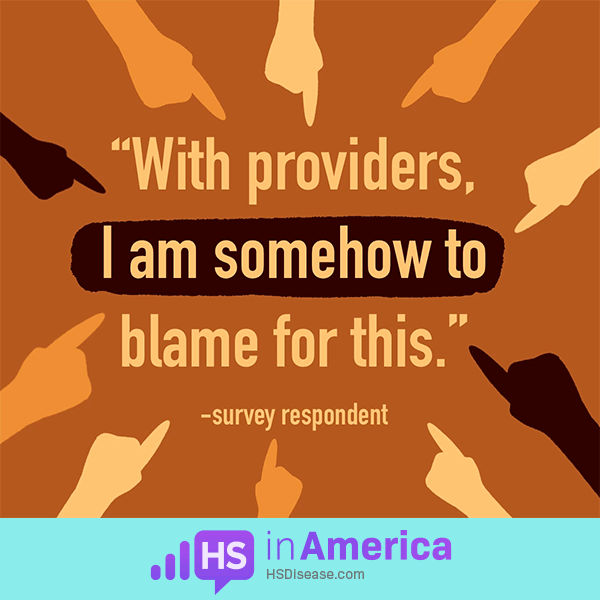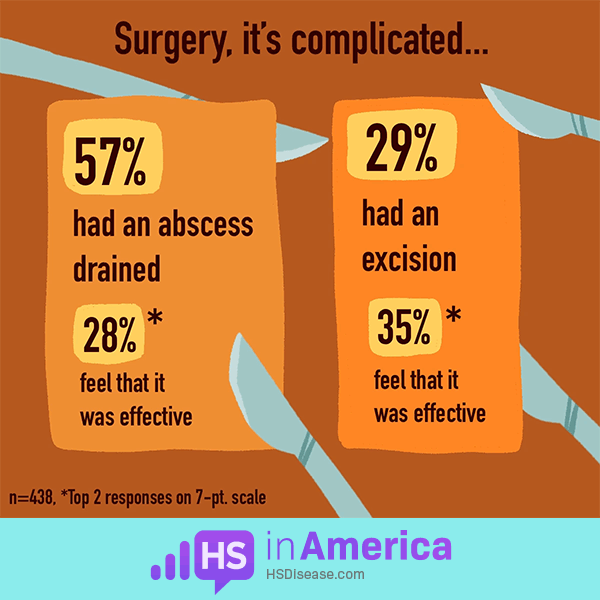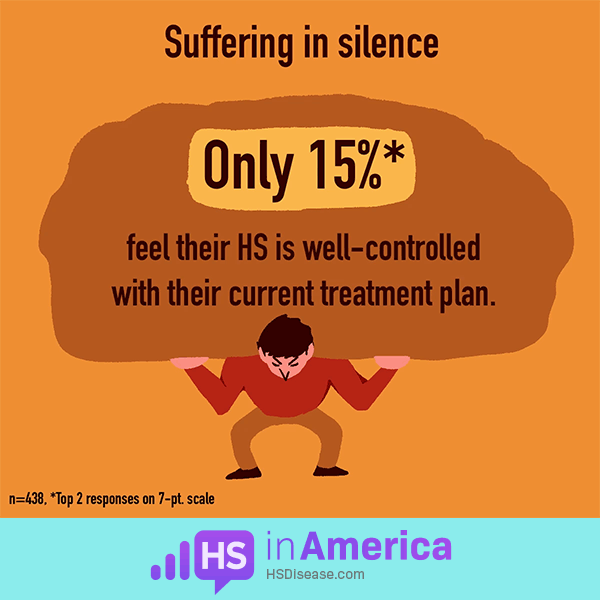Boiling Point: Results from the 2nd Hidradenitis Suppurativa In America Survey
For many people with hidradenitis suppurativa (HS), there comes a point when it seems there are no treatments that provide relief from the pain and complications of HS symptoms. It may be because folks have tried every possible treatment available, or perhaps it is because doctors tend to be unfamiliar with HS. This means people with HS spend the majority of their visits educating their doctor.
We asked more than 400 people living with HS to share what life is like in our Hidradenitis Suppurativa In America Survey. The results provide insight into how complicated treating HS really is.
HS symptoms can appear from head to toe
No matter where HS presents itself on the body, the pain and discomfort are physically and mentally draining. Boils often occur in the most sensitive areas of the body, commonly in the groin/buttocks region or under the arms or breasts. However, HS can affect any area of the body.
While some HS warriors have pinpointed environmental factors that may trigger a flare, even avoiding their specific triggers might not be a cure. Boils can pop up at any time, often without any warning.
Finding an effective treatment plan is not easy
It takes many HS warriors months or even years to find a treatment plan that works, while others may never find treatments that help their HS stay in remission. According to the survey:
- 85 percent currently use at least 1 topical treatment
- 67 percent currently use an anti-inflammatory treatment
- 25 percent currently use oral antibiotics
- 15 percent currently use a biologic treatment
HS warriors will go to great lengths to find relief, despite the stigma and shame many face even from their doctor.
Surgery is not always effective
Some people look to surgery to help with their HS flares. Survey results show that 63 percent of respondents report undergoing some type of surgical procedure to help treat their HS. Incision and drainage of abscesses are the most common procedures. However, many feel mixed emotions about how effective this treatment option is in treating their HS or symptoms.
The trial and error of alternative treatments
Since traditional medicine is not always effective in treating the symptoms of HS, many HS warriors turn to a host of different alternative treatments to help relieve their symptoms. There is not a one-size-fits-all treatment option, which can be detrimental to treatment outcomes and emotionally draining.
So many treatments, but not a lot of relief
HS affects each person differently, which means that treatment plans vary from person to person. Only 33 percent of people surveyed feel their doctors help manage their HS pain, despite the pain being the most commonly reported symptom.
One HS warrior shared, “The pain is the primary difficult aspect of HS, and it should be a vital part of HS treatment. Even if it’s not the worst pain I’ve ever felt, the chronic nature of pain from HS is draining and makes regular life activities difficult.”
Other HS warriors shared that they wished their doctors were more knowledgeable about their disease and current research.
When HS warriors are faced with so much adversity and turmoil, it can feel like they are constantly reaching their boiling point. By sharing our stories and connecting with one another, we can help change the narrative on this grossly misunderstood and underdiagnosed chronic skin condition. Not only do we have work to do in educating the general public, but we also need to fight for more research and information to be disseminated to doctors. Contributing to surveys paint a picture of the realities of the patient experience. Together we will be the change!
The 2021 Hidradenitis Suppurativa In America Survey was conducted online from June through August 2021. The survey was completed by 438 people diagnosed with hidradenitis suppurativa.






Join the conversation